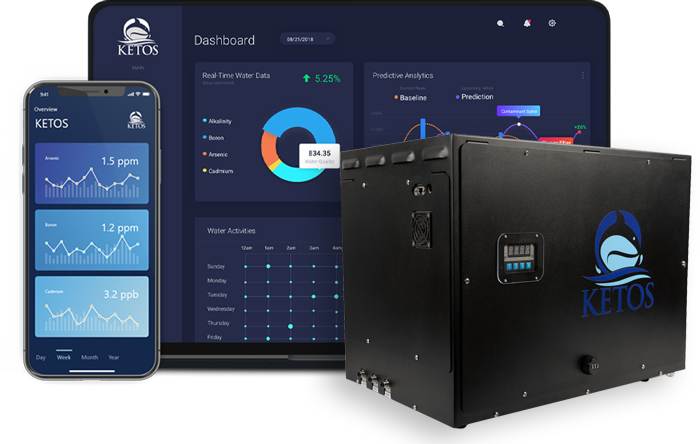KETOS recently launched an in-house webinar series called KETOS Water Cooler Chats. The series aims to discuss various areas of innovation in the water industry and how KETOS solves some of the commonly faced challenges with a unique approach, enabling municipalities and industries.
Our first chat involved Pressure Release Valves (PRVs) for municipal use and how KETOS helps improve operations in a substantial manner for a problem that has been both labor-intensive and cost prohibitive. Joining us for the session were Jon Davis and Nick Martinez of Repmasters Inc., two industry experts well versed in PRVs. At the end of the session, we tackled frequently asked questions to help attendees understand the impact of PRVs and potential market solutions.
If you missed the webinar, you can see the complete recording it at the end of this post.
WHAT ARE SOME OF THE CURRENT ISSUES FACED WITH PRVS?
A PRV is an essential asset in a municipal system, as it allows you to control your source water. However, they are often a highly overlooked aspect of municipal water systems.
When it comes to automatic control valves, various issues will affect the proper functioning of PRVs. These include:
-
Sizing. Common process for engineers is to match the valve to the line. For example, if you have an 8-inch line, typically, an 8-inch valve will be installed. However, capacity and velocity need to be considered where that rule of thumb may not hold. If you get the sizing wrong, your valve will not close drip-tight, causing other issues down the line. An ideal valve sizing should operate above 20% open but not exceed 80%. Note that constant operation outside of this percentage window will lead to unfavorable conditions.
-
Design. Designs typically don’t account for high and low flows. Thus, valves can quickly become damaged, and water quality issues related to stagnation can occur. PRVs should be designed in such a way as to account for low-flow scenarios, with valves strategically placed at optimal distances to account for changes in water pressure according to usage cycles.
-
Maintenance. When it comes to PRVs, preventative care is crucial. Many municipalities simply don’t have enough support from the experts about the valves to understand the importance of preventive maintenance programs. They don’t realize that PRVs stay in an expected working condition, if regular maintenance occurs. Valve are risky as they tend to fail “open” and often cause main breaks and damage to various other system assets. Often the culprits are broken fittings, clogged ports, or clogged strainers, all of which are avoided if regular maintenance procedures are followed.
-
Control/Monitoring. The problem with PRVs is if you can’t see them, you don’t know what they are doing. If you can’t control them (with regular inspection and maintenance), they are likely to fly open and cause damage. Often, the main factor in the lack of control is telemetry and controls’ general cost. Gaining “control” may involve adding a sump, PLC, and electricity, at an expense that, on average, costs $20,000. It’s money a municipality may simply not have. However, without adequate monitoring, a municipality won’t know there’s a problem until it manifests.
WHAT’S THE BUSINESS IMPACT OF PROPERLY OPERATING PRVS?
Accurately functioning PRVs can create operational efficiencies that can keep the entire system safe. More than that, they can save municipalities money and operating costs by removing inefficiencies and damage caused by water main breaks. The business impact of carefully maintained PRVs is substantial. Properly maintained PRVs can save a municipality in multiple instances, including:
-
Operational Efficiency
-
Proactive water quality interventions
-
Reduction/avoidance of water main breaks
-
Management of municipal infrastructure assets
WHAT ARE SOME POSSIBLE SOLUTIONS TO ADDRESSING PRV ISSUES?
Beyond valve design and education on the importance of preventive maintenance, technological interventions can help municipalities gain visibility and act proactively. One innovative solution can be the KETOS Wave.
KETOS Wave is a smart quantitative water monitoring sensor node that can be installed on downstream piping to gain telemetry and control over any PRV. Its patented, self-powered and intelligent hardware provides real-time monitoring of water metrics such as flow, pressure, leak detection , usage, volume to share some of the characteristics. The KETOS Wave can also remotely trigger the closing of a PRV to minimize main breaks and damage. It can also identify high pressure in a zone to alert the staff before a break occurs.
The installation of a KETOS Wave solution with its end-to-end offering of robust hardware and interactive software helping bidirectional communication with remote control is proving to be a much more cost-effective way to add telemetry and automation, allowing municipalities to gain control of their PRVs without a $20,000 price tag.
WHAT’S THE IMPACT ON THE OPERATIONS OF THE MUNICIPALITY THEMSELVES?
Ultimately, PRVs provide municipalities with the ability to control source water. When municipalities gain control over their PRVs, they also gain more control over aspects of water distribution. An optimally working system will allow for a change in the water source to assist in water quality. It will also ensure nominal grade line pressures to prevent mainline breakage.
HOW DOES KETOS WAVE ADDRESS MUNICIPAL PRV MAINTENANCE ASSISTANCE?
If the best thing that municipalities do to protect their PRVs and their infrastructure is to maintain their PRVs, KETOS Wave is a potential solution. That’s because it provides “visibility” into a PRV’s functioning for proactive monitoring, making maintenance easier.
-
KETOS Wave’s proactive capabilities include:
-
Remote shut-off mechanism as an inline device
-
Monitoring for pressure, flow and leaks in real-time
-
Understanding anomalies across all of the quantitative metrics
-
Capturing of flow data to identify valve operations
-
Ability to trend data to analyze system conditions along with insights into behavioral analytics
All of KETOS’s capabilities come from its hydro-powered hardware, eliminating the need for sumps, PLCs, or electricity. KETOS Wave also saves municipalities in costs related to human capital. With remote monitoring capabilities, visibility can be achieved off-site so that managers can check on systems remotely and be alerted to issues in real-time from anywhere. The savings, along with telemetry costs, can be anywhere from 50-75%.
The ability to trend data, have remote visibility, and exert control over your assets within the system provides you with a more efficient operation by taking an extremely risky asset in your system less risky.
AT THE END OF THE DAY, WHAT DO MUNICIPALITY OPERATORS NEED TO KNOW?
The biggest takeaway for municipality operators to understand PRVs is that, while critical to operations, there are risks posed when valves stop operating optimally (or completely). Since PRVs can throw off systems completely, operators need to learn about PRVs and put into place maintenance programs to curb breakdowns before they occur.
Maintaining all PRVs is essential to the longevity and health of the overall water system. Because, more often than not, PRV issues are not visible until a large-scale breakage occurs, regular maintenance is a great way to check the system’s health before problems arise.
Beyond maintenance, gaining control and telemetry of PRVs is essential to reducing human capital costs, minimizing water main breaks, and creating efficient operations. Gaining control of PRVs also empowers operators to make mission-critical decisions to maintain the system’s overall functionality between regularly scheduled maintenance.
OUR KEY PRV TAKEAWAY
Knowledge is power. It’s not uncommon for municipalities to have little visibility on their PRVs or little in-house expertise. Reaching out to other municipalities for valuable insights and best practices is an excellent first step in understanding how to protect your municipal water systems from PRV failure. Taking it a step further and seeking technological solutions (such as KETOS Wave) to operators you gain visibility and control can also mitigate risk and lower general costs.




